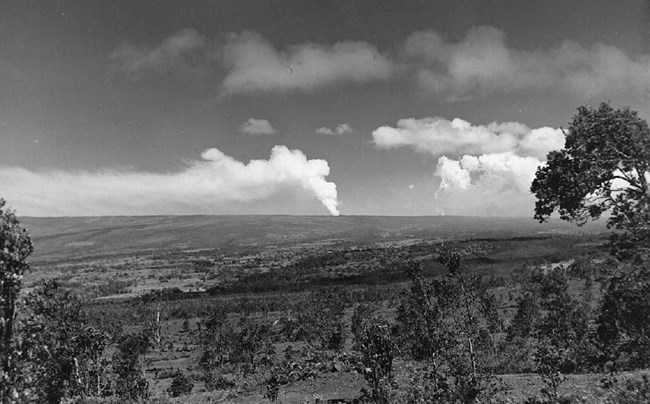|
Visit our keyboard shortcuts docs for details
Historic Volcano Observatory Footage of 1942 eruption of Mauna Loa. The eruption of 1942 was noteworthy because volcanologist were able to predict the timing and place of the eruption based on geologic instrumentation. On April 26, 1942, the summit crater Moku‘āweoweo on Mauna Loa began to erupt, and within less than a day its flow spread along the northeast rift. This eruption lasted for 14 days, covered over 12.3 square miles (34 sq km) of land, and became known as Mauna Loa’s “secret” eruption. 
Mauna Loa Eruption, 1942. Photo National Park Service, Hawai‘i Volcanoes National Park, Historic Photo Collection, Accession HAVO-554. By 1939 most of the world was engulfed in war. Military impacts at Hawaiʻi Volcanoes National Park, formerly known as Hawaii National Park, started even before the U.S. involvement. The park was used for an Army headquarters, a bombing and training area, and a camp for Japanese internees. These events were only exasperated by another monumental event - the April 26, 1942 eruption of Mauna Loa. “My second night on the island the volcano suddenly erupted, the sky and everything lit up red everywhere, it was beautiful. Everyone was scared, not knowing what to do.”- Joe Castro's account of witnessing the eruption just one night into his stay on Hawai‘i island.
Additional resources:
|
Last updated: April 25, 2022
